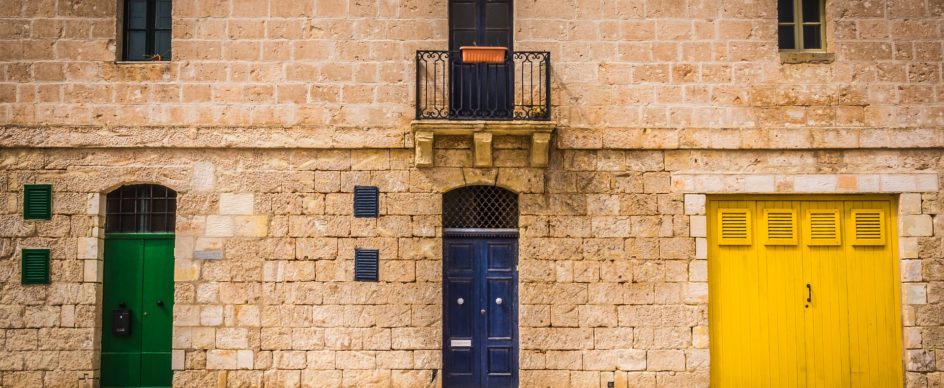
Your Guide To Maltese Traditional Door Knockers
- Oct 24, 2020
...one of the country's quirkier attractions!
Malta’s door knockers are certainly a sight to behold and one of the country’s quirkier attractions.
Before electronic bells (or bells in general) were a thing, door knockers were essential if a guest wanted to signify their arrival.
Have you ever wondered what the story behind these practical pieces of art is?
A Sense of Individuality
If you’ve ever wandered around the winding streets of the old cities of Valletta, Mdina and the Three Cities, you’ll immediately notice that the antique doors, windows and balconies are similar in style and design.
This homogeneity does not mean that Maltese families do not have a sense of individuality. The one area where homeowners could truly show off their family’s legacy tended to be the door knocker or “ħabbata” in Maltese.
Animal designs – especially marine motifs – such as fish and sea horses are also common. This theme relates to the Maltese’s connection to the surrounding Mediterranean sea. The dolphin tends to be the most popular amongst marine motifs, as this creature was Malta’s first coat of arms, post-Independence. Thus, a dolphin ħabbata signified a sense of pride in Malta’s independent status.
Other animal designs – such as the proud lion – are also quite popular, alongside Ancient Egyptian and mythical symbols such as pharaonic symbols, mermaids and mystical elephants’ heads.
The Maltese Cross tends to be the most prevalent door knocker, however. While the eight-pointed cross can be traced back to the 16th century’s Knights Hospitaller (Order of St John), the Knights’ roots in Malta as their most significant base led to it being adopted by the Maltese as a national symbol.
A Status Symbol
The Maltese are widely known as being a house-proud nation. Therefore, it comes as no surprise that the door knocker functions as a status symbol. The most extravagant door knockers usually belonged to wealthy families.
Those with noble lineage tended to install massive, baroque style knockers – symbolising power, prosperity and authority.
The Different Door Knocker Categories
Across the Maltese isles, you’ll notice that there are different types of door knockers. The more traditional ones tend to be black, and usually consists of a ball with side holes, from which a small ball would hit against the door-affixed, round-shaped boss. These tend to be the most common and can be found on all types of doors, across social classes.
Knockers are sometimes absent and replaced by the more practical and simplistic door handle – known as “pum” in Maltese. While less ornate in style, their simplistic nature sill adds something special to a street’s overall charm.
Traditions associated with door knockers
In the good old days, a peculiar tradition connected death, grief and door knockers. If a family member passed away, the rest of the family used to remove their houses’ door knockers as an overt sign of respect and mourning. Neighbours would do the same thing, and they would also leave their doors half-open – implying a sense of camaraderie and openness with the deceased’s family members.
Another singular tradition associated the door knocker’s cleanliness with that family’s level of hygiene. The cleaner the door knocker, the more efficient that family’s maid was publicly seen to be. Door knockers, therefore, served as a point of discussion and gossip for the villagers.
Nowadays, door knockers have become a trendy accessory piece. Souvenir-oriented outlets in Valletta and Mdina sell miniature door knockers that you can take back home, while the artisans at Ta’ Qali’s Crafts Village still lovingly create full-sized door knockers for whoever wants to continue this Maltese tradition. Furthermore, local fashion designers and jewellery companies are using the door knocker and Maltese doors in general as a source of inspiration for their latest collections. One thing is for sure – art truly transcends the passage of time!




